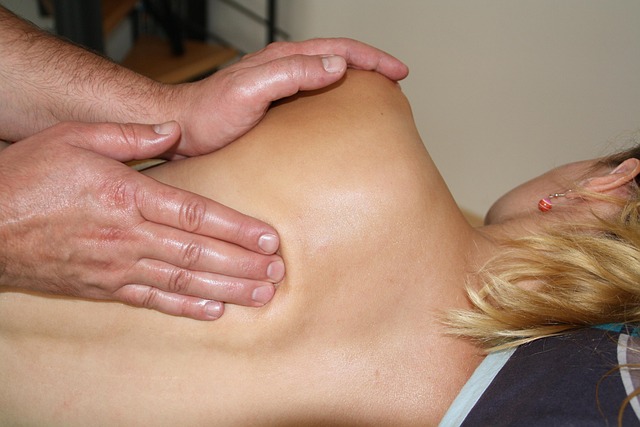Migraines significantly impact daily life due to intense headaches and associated symptoms. Cryotherapy, involving extreme cold exposure through rapid nitrogen baths, emerges as a potent non-pharmacological treatment. To maximize its benefits, understanding individual triggers like hormonal changes or specific foods is crucial for tailoring personalized treatment plans. Targeted cryo-treatment at trigger points on the head, neck, and shoulders offers faster relief than traditional methods, making cryotherapy an attractive alternative to reduce medication reliance or mitigate side effects from conventional therapies.
Suffering from migraines? Cryotherapy, or cold therapy, could be a game-changer in your migraine management arsenal. This natural, non-invasive approach has gained traction as an effective way to alleviate pain and reduce the frequency of migraines.
This article delves into the science behind migraines and their triggers, explores the role of cryotherapy in treatment, and provides a step-by-step guide to identifying and applying trigger points for optimal results. Learn how to harness the power of cold to find relief from migraines.
Understanding Migraines and Their Triggers
Migraines, a debilitating condition characterized by intense headaches and sometimes visual disturbances or speech difficulties, can greatly impact an individual’s quality of life. Understanding what triggers these episodes is crucial for effective management. Many factors can set off a migraine, including hormonal changes, certain foods (such as processed meats, aged cheeses, and alcohol), stress, lack of sleep, bright or flashing lights, and even specific scents.
Cryotherapy for migraines has emerged as a potential game-changer in treatment. By exposing the body to extreme cold, typically through rapid nitrogen baths, cryotherapy can help reduce inflammation and constrict blood vessels, providing temporary relief from migraine symptoms. Identifying personal triggers is essential before incorporating such therapies, as it allows individuals to tailor their treatment plans effectively and potentially minimize side effects associated with frequent exposure to extreme cold.
The Role of Cold Therapy in Migraine Management
Cold therapy, including methods like cryotherapy for migraines, has emerged as a powerful tool in migraine management. By inducing vasoconstriction and reducing inflammation, cold applications can significantly alleviate migraine symptoms. Cryotherapy involves exposing the affected area to extreme cold temperatures, which helps constrict blood vessels and decrease nerve activity, thereby providing rapid pain relief.
In the context of migraines, cryotherapy offers a non-pharmacological approach that can be particularly beneficial for individuals looking to reduce reliance on medications or those experiencing side effects from conventional treatments. Studies have shown that short bursts of cold exposure can lead to faster resolution of migraine attacks compared to traditional treatment methods. This alternative therapy is gaining traction due to its ability to target the root causes of migraines, offering a natural and effective way to manage this debilitating condition.
Identifying Individual Trigger Points for Effective Cryotherapy
Identifying individual trigger points is key to unlocking the full potential of cryotherapy for migraines. This involves a meticulous process where healthcare professionals map out specific areas on the body that are closely linked to migraine pain and discomfort. By understanding the intricate neural pathways and muscle tensions associated with migraines, practitioners can pinpoint precise locations for cryo-application.
For instance, trigger points often manifest as tender spots in muscles or along nerve endings around the head, neck, and shoulders. Targeting these areas with controlled cold exposure during cryotherapy sessions can significantly reduce migraine frequency and intensity. Customized treatment plans that focus on individual trigger points ensure more effective cryo-therapy, offering relief to those struggling with this debilitating condition.
Applying Cryotherapy: Techniques and Considerations for Optimal Results
Applying cryotherapy involves a precise and targeted approach to achieve optimal results, especially in cases like migraines. Techniques vary but often include the use of cold packs or specialized cryo-devices designed for specific body areas. For migraine sufferers, applying ice or cold therapy directly to the head, neck, and shoulders can provide significant relief. This might involve holding an ice pack against these areas for 10–15 minutes, repeating this in intervals, or using a cryo-device that offers controlled cold exposure.
Considerations for effective cryotherapy include ensuring proper training to avoid skin damage from prolonged cold exposure. It’s crucial to monitor the duration and frequency of treatments, as excessive cold can lead to discomfort or even frostbite. Customizing the technique based on individual needs and preferences is essential. For migraines, a combination of local cryo-application and whole-body cooling through methods like whole-body cryostimulation has shown promise in clinical studies.
Cryotherapy has emerged as a powerful tool in managing migraines, offering targeted relief by identifying and treating specific trigger points. By understanding individual migraine triggers and applying precise cold therapy techniques, individuals can experience significant reduction in pain and frequency. This holistic approach, focusing on both prevention and acute treatment, positions cryotherapy as an effective game-changer in the world of migraine management, providing a promising avenue for folks seeking relief from this debilitating condition.
